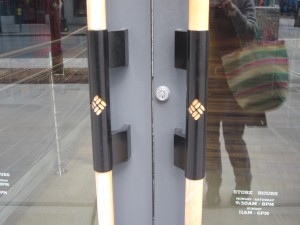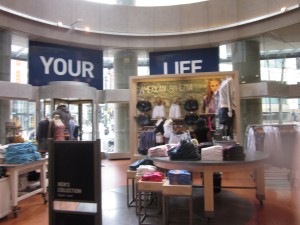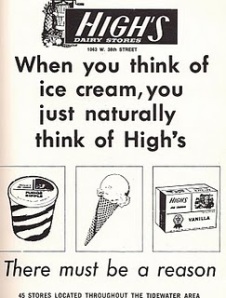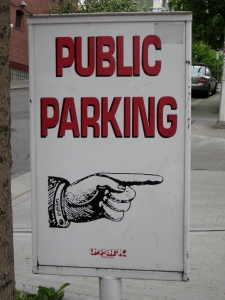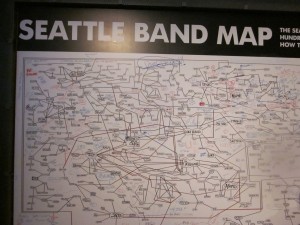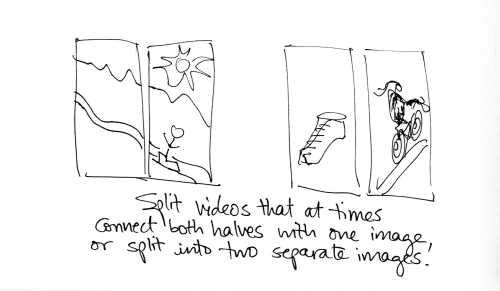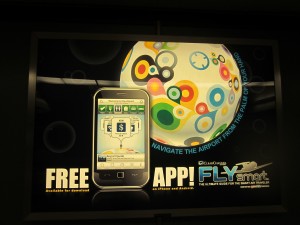In order to get a sense of where we could potentially be going in the world of (essentially western) design, this week we took a look at where we came from. This context can ground our ideas and be a means to more accurate prognostication.
With the birth of industry, science, political science (constitutions for newly-independent states) in the 18th century, there was a new development of forward thinking, belief in potential progress and a hope for the future. With the new insights that came from these new fields, there was an optimistic perception that everything would eventually be known, diseases would be cured, and we would reach a common utopia full of great pleasure and leisure.
These were the roots of modernism, a break from tradition and a look toward the new. This also changed the role of art in society. Where before art was a reflection of the definition of beauty, a depiction of nature, and a reflection of cultural values, its potential opened up with the advent of the photograph and the development of science.
In Leonardo Da Vinci’s time in the 15th century, part of art was to explore nature. He explored anatomy of humans as well as plants to better understand their structures, and he drew his findings.
He explored anatomy of humans as well as plants to better understand their structures, and he drew his findings.
He also studied motion through drawing…
Not all agreed on how the utopia of modernism would be reached, but there were two parallel camps, namely the Rationals and the Empiricists. They were accompanied by the philosophical camps of Voltaire (& Rene Descartes) and Rousseau (& Francis Bacon), respectively. The former believed that knowledge was acquired through pure thinking, and believed that if people could fix their emotions they could fix everything. The latter, by contrast, believed that knowledge was acquired through direct sensory experience. Neoclassicist and Romanticist artists in turn reflected these two parallel trains of thought. Where the Neoclassist tended toward realistic depictions of their subject matter, the Romanticists focused more on conveying the feeling of the experience they were depicting. Chiaroscuro was a common technique for the dramatic desired effects among the Romanticists. They believed in the transcendent experience of life, those moments as Tony described them, when “life opens, time dilates, and you become what you are looking at.”
Neoclassicist Bernardo Belotto:
Modernists developed a sense that they were breaking from tradition, that they were going to create art that would change the world, and that they would be the ULTIMATE art form. Words to describe them could be, “experimental, avant-garde, forward looking, elite, and confident. In the early days of modernism, there was a striving for reduction of form to its pure essence.
Within the modernist movement is the idea of Utopia and its perfection, as mentioned previously, and this is parallel to consumerist culture, striving for the ideal.
But Utopia never happened, and people were still sick, and society was still messed up, and the expected progress didn’t make the ultimate difference that had been so optimistically anticipated, which gave way to Post-Modernism. Post Modernist thought broke from the objectivity and progress of Modernism to a belief in multiple realities and subjectivity. With this came a transfer of power from the creator to the viewer. It was a culture of language and called into question the power structures of the time. There was room for playful illusions and a generous use of irony.
Essentially as a culture, we gave up on trying to make pure new any more and gave up trying to make things better. The only way to create new was now to combine the old into new contexts, to combine styles.
 On this Jan/Feb 2011 cover of the Utne Reader, adding Marge to replace Howard Miller’s Rosie the Riveter from World War II is a classic example of this mixture. Another example is of Michelangelo’s Sistine Chapel painting “The Creation of Adam” transposed to a bottle of 2009 California table wine, God’s hand being the one with the wine…
On this Jan/Feb 2011 cover of the Utne Reader, adding Marge to replace Howard Miller’s Rosie the Riveter from World War II is a classic example of this mixture. Another example is of Michelangelo’s Sistine Chapel painting “The Creation of Adam” transposed to a bottle of 2009 California table wine, God’s hand being the one with the wine…
The fact that a designer could transpose a divine event such as the creation of Adam (that took years to paint) into a wine label emphasizing ordinary daily life is an indication as to how removed the original meaning is from the current one. Or it could also be an example of how religion has lost some of its mystique.
 As for the post-modern fish, it could be found in Dr Seuss’s book, One Fish Two Fish Red Fish Blue Fish (1960), where he puts fish in all different contexts – having them drive cars and be police officers, nothing that a simple modern swimming fish would ordinarily do…
As for the post-modern fish, it could be found in Dr Seuss’s book, One Fish Two Fish Red Fish Blue Fish (1960), where he puts fish in all different contexts – having them drive cars and be police officers, nothing that a simple modern swimming fish would ordinarily do…
The 1960’s saw the beginning of the blurring of the lines between life and art, with the development of the moving picture and the video. The movements of Dada and later Fluxus emphasized an anti-establishment approach. On into the 90’s the development of further art forms and technology such as the internet and computer graphics continued the complex potential of multimedia performances.
Body art is a simple version of performance art:
The versions of versions of versions of postmodernism has paralleled a removal from reality from virtual experiences. Video games exemplify this virtual experience of life.
Many visual arts such as movies, video games etc are being made into three-D, which people find fascinating – but which is also funny because we LIVE in 3-D – how cool is that?! Maybe it’s the fascination with human-made 3-D.
And while corporate culture still believes and sells the utopia of modernism and perfection, post modern culture as a whole does not believe in it (even if we still get sucked into shopping for the marketed lifestyles!)
New Media arts are contiguous with keeping the viewer integrated in the art experience, and are often interactive in nature. They are also often performance-based.
Just this past week we went to Pottery Northwest in Queen Anne, where they had an experiential show with three different artists… one who allowed the audience to break off pieces of a tree she had made to take home, one who had a slip pendulum show, and the third who had letters that fell and broke… all very interactive with the audience.
More technology-based examples could be this:
For conferences…
http://www.gesturetek.com/illuminate/productsolutions_illuminatekiosk.php
…or fashion shows….
http://fashionista.com/2010/09/gucci-launches-interactive-fashion-show-technology/
… or even 4-D…
… and then there’s my personal favorite… fire poi … a dynamic performance art that is not so new, but it is still gaining skilled spinners…













